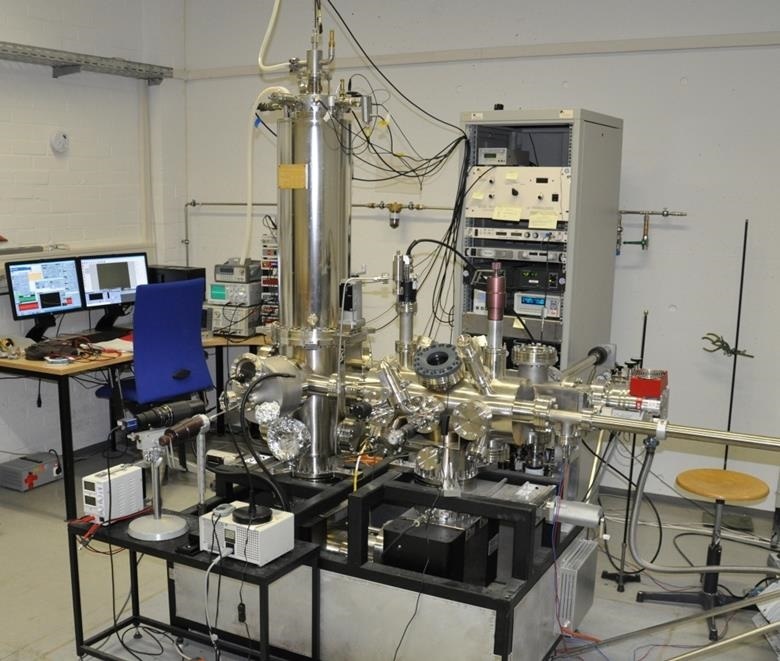
Image credit: University of Regensburg
Scientists in Germany have been able to make new interpretations of their previous atomic force microscopy (AFM) imagery work through looking closer at the interactions. Their latest AFM images have been able to show detailed bond formation, showing that the ring-shaped sub-atomic images that they revealed in their previous work to be a result of the Lennard-Jones physisorption–chemisorption energy curve.
Surprising Images
Back in 2015, a team of scientists at the University of Regensburg, Germany, published sub-atomic resolution atomic force microscopy (AFM) images of both single copper and iron atoms. The images they generated confounded them, what they expected to see was as the AFM’s copper tip covered with the carbon monoxide molecule scanned the individual atoms, were spherical images that demonstrated the repulsive force at the tip being greatest at the atoms’ centers. Instead, the images they attained which mapped the minute changes in force showed repulsion falling at the atoms’ centers, generating images of rings.
It was theorized that this unexpected output was due to titling in the carbon monoxide molecule, which is not an uncommon occurrence in AFM.
A New Perspective
This year, the team lead by Franz Giessibl wanted to look even closer, and have used AFM to watch the formation of bonds between pairs of atoms. Their most recent work has been successful in viewing in sub-atomic resolution the tracking of the force a carbon monoxide molecule makes on individual atoms. This new research has given way to a new interpretation of the previous findings.
The high resolution images demonstrated that the first stage of bonding sees the carbon monoxide molecule generating weak van der Waals attraction forces with the metal atoms. This process is known as physisorption. Next, the researchers were able to observe the transition from physisorption to chemisorption, a stronger and direct bonding.
This transition from physisorption to chemisorption was first described by Sir John Lennard-Jones almost 90 years ago, and now, Giessibl’s team have been able to observe this effect in incredibly fine detail for the first time. The images produced by the AFM experiment actually show the energy curve that illustrates physisorption transition to chemisorption.
New Details of the Chemical Bond
Ferdinand Huber and Julian Berwanger, PhD students of Giessibl had been tasked with investigating the interaction with iron atoms. The pair were able to record the expected repulsion following the initial van der Waals attraction force. After this, they found that a stronger attraction was formed, and the team recognized that this was in fact due to the formation of a chemical bond. This was the carbon monoxide tip going from physisorption to chemisorption on the metal atoms.
They recorded an initial attraction with 5 meV potential energy, attributed to the van der Waals bond between the carbon monoxide tip and an iron atom. Following this they recorded a chemical bond with 80 meV potential energy.
The team observed this effect when studying copper as well as iron, but not will silicon, which produced the expected spherical images. This evidence hinted that the copper and iron results where due to chemisorption with metal atoms, as silicon is a semimetal and does not interact in the same way.
Further to this, a team at Ludwig Maximilian University of Munich, lead by Hubert Ebert, used density functional theory (DFT) calculations to assist in explaining what Giessibl’s team had found. Their results confirmed that the images show the hybridisation of electron orbitals in the metal atoms and the carbon monoxide tip’s oxygen atom, in other words, a bond formation.
The research has shown without doubt how the ring images were generated in the initial study. The quality of the data collected is being praised and the findings have implications for how scientists should read atomically-resolved images.
Disclaimer: The views expressed here are those of the author expressed in their private capacity and do not necessarily represent the views of AZoM.com Limited T/A AZoNetwork the owner and operator of this website. This disclaimer forms part of the Terms and conditions of use of this website.